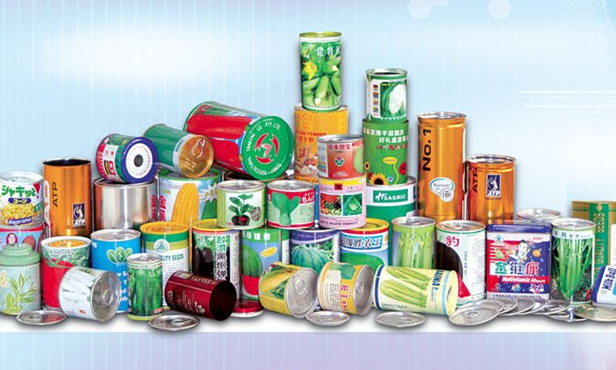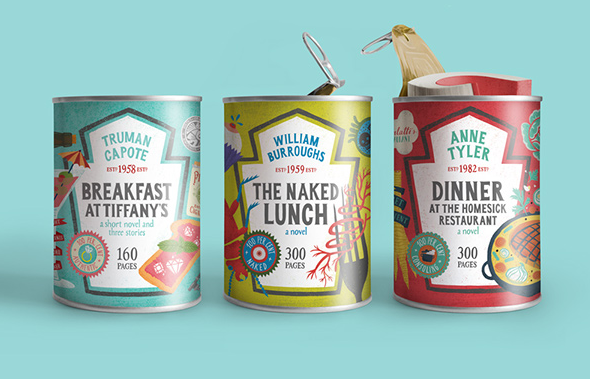食品包装用のブリキ容器の進化
食品包装用のブリキ容器:食品包装用の金属容器の進化
今日、私たちが目にしているのは、食品包装用のブリキ容器だけです。 しかし、これは常にそうではありませんでした。 それどころか、当初、食品包装に使用される他の材料は多種多様でした。 私たちは時々これらの材料を見る傾向がありますが、それらはブリキの容器ほど人気がありません。
今日の食品包装業界は、特に金属製包装の台頭以降、いくつかの変化を経験しました。 金属のおかげで、業界は食品の大量商業化を容易に行うことができます。 保存期間を延ばし、製品の品質を向上させることができます。
金属パッケージを使用することには他にもいくつかの利点があります。 金属容器の進化、その利点、食品包装に使用されるその他の素材について説明します。 それでは、これ以上遅らせることなく、始めましょう!
目次
- 始まり
- 20番目のセンチュリーメタルコンテナ
- 食品包装用ブリキ容器以外の包装資材
- 要約
始まり
他の業界と同様に、食品包装にもいくつかの転換点がありました。 これらの転換点は、業界を今日私たちが見ているような形にするのに役立ちました。 もちろん、これらの進歩により、パッケージングの全体的な有効性が向上しました。
最新の包装技術はあらゆる面で改善され、強化されています。 当初、人々はテクノロジーを持っていなかったし、これらの現代技術にも精通していませんでした。 当時は専用の缶パッケージ。
金属製の容器に入れて贈り物を送ったり受け取ったりすることを真に楽しめるのは、エリートだけでした。 しかし、現在では事態は進展しています。 実はプレミアムクラスのブリキ容器をリーズナブルな価格でお楽しみいただけます。 卸売業者経由で購入すると価格が大幅に下がります。
これらすべてがどのように始まったのか、そして何がターニングポイントとなったのかに焦点を当ててみましょう。

初期の工業用パッケージング
アメリカとフランスの革命の直後、私たちは現代の包装産業の進歩を見ました。 業界は他に類を見ないほど出現したようです。 19番目の世紀には、技術と設備の面で進歩を提供しました。
それは、特に包装業界において、工場の機械に大きな影響を与えました。 1800年代初頭、食品業界は市販の食品容器を楽しむことができました。 彼らはこれらの容器を作るためにガラス、陶器、ブリキ鉄を含む多種多様な材料を使用しました。
1813年、最初の商業用缶詰工場が誕生しました。 イギリスに本拠を置く食品工場が提供する缶詰の果物、肉、牡蠣、野菜。 缶詰のアイデアは大きな需要に応えました。 人々はそれのファンになるので、上昇が始まります。
1830年代までに、装飾されたブリキ缶が町の話題になりました。 食品産業を含むいくつかの産業は、それらを幅広い製品に使用しました。 1847年、アランテイラーは、円筒形の缶の端をプレスするために使用される機械の特許を取得した最初の人物でした。
人気のある需要のために、他のいくつかがビジネスに参加しました。 そのため、プレス機の進歩と発展が急速に進んでいます。 同様に、ほぼ11年後の1858年に、アメリカの発明家であるエズラJ.ワーナーが缶切りのアイデアを思いつきました。
特許を獲得した後、そのアイデアは米軍に紹介されました。 特に南北戦争中、軍隊の間で非常に人気がありました。
1875年に、別の革新的なアイデアが生まれました。 世界は最初の先細の缶を見ました。 イワシやコンビーフの缶詰に重要になる可能性があります。 需要と技術の進歩により、1880年代に最初の自動製缶機が誕生しました。
1899年に、私たちは再び、箱から出してすぐに使えるユニークなパッケージ開発を見ました。 エアロゾルが特許を取得し、ヘルブリングとペッチに授与されました。 エアロゾル缶技術を使用すると、容器内に圧力下で気体または液体の内容物を保管することが可能でした。 スプレーすると内容物が細かいミストとして出てきました。
数十年後、エアゾール缶の現代版が登場しました。
食肉包装の革命
アメリカ合衆国の食肉産業は、今ほど洗練されていませんでした。 それどころか、いくつかのループホールと不衛生な状態がありました。 1905年、ジャーナリストのアプトンシンクレアは「ジャングル」という本を書きました。 この本は、アメリカの食肉包装業界の不衛生な状況を明らかにしました。
それは架空の小説でしたが、食肉包装業界に革命を起こす重要な推進力として機能しました。 この本は、食肉検査法、後に純粋食品法、そして最後に麻薬法をもたらしました。 この情報は、文字通り米国食品医薬品局のバックボーンになりました。
20番目のセンチュリーメタルコンテナ
1900 年代初頭、消費者社会が形成されつつあったため、人々はいくつかの新しい意図を考え出しました。 1909年、アメリカ西海岸ではマグロ缶詰が楽しまれていました。 数年後、人々はブリキのパッケージやインクを乾燥させるために連続オーブンを使用するようになりました。
1917 年、アスピリンはポケットサイズの缶に入って人々に与えられました。 バイエルはこの素晴らしいアイデアを思いつきました。 これがキー開口部を備えたコーヒー缶の始まりにつながりました。 以下に、主要な食品包装開発を要約してみました。 これらの発展は第二次世界大戦以前のものです。
- スパム缶詰がビジネスとして登場 -1926
- 人々は最初の電子缶切りを見ました - 1931
- クルーガーが最初のクマをマーク - 1935
世界大戦直後の 1945 年に、エアゾール缶が大規模に販売されました。 メーカーは、特に冷戦時代の後、信頼できるものを探していたため、金属に挑戦しました。 彼らは、金属製の容器が核爆発に耐え、安全な食品を提供できるかどうかをテストします。
結果は良好であることが判明し、食品包装用の金属またはブリキの容器の魅力がさらに高まりました。 その後 1957 年に、メーカーは金属缶の製造にアルミニウムを組み込み始めました。 数年後、最初のアルミニウム製ビール缶が登場し、1962 年には各企業がプルタブ付きの最初の飲料缶を考案しました。
持続可能性の時代
時が経つにつれて、人々は環境に対してより配慮するようになりました。 この検討の結果、1970 年にアースデイが開始されました。アースデイの影響で、メーカーはリサイクルしやすい製品の使用にさらに重点を置くようになりました。
実際、彼らは金属のリサイクルが効果的な方法であることに焦点を当て始めました。 彼らの考えは、持続可能性の原則に留意することでした。 この目的のために、彼らはより少ない材料を使用して軽量の缶を発明しました。 1980 年代半ばまでに、アルミニウム缶はその堅牢さと長い保存期間により非常に人気が高まりました。 さらに、これらの缶のリサイクルは非常に簡単でした。 メーカーが長い間達成しようとしていたもの。
The introduction of a retained ring of beverage containers was another sustainability goal inspired by innovative concepts. If the ring remained intact and did not break off, it kept the metal material intact, thus having more material to recycle.
Likewise, during the nineties, we saw how can were downsized with fewer circumferences sizes. The idea was to make these can more efficient and recyclable. They are the epitome of sustainable packaging.
Among the metals, tin and aluminum were the top choices of consumers, mainly because they both are highly recyclable. In addition, they are also reusable. Tin containers for cookies are later used to save things like threads, clips or spices.
Their reusability and recyclability factor has made them the leading material in the food packaging food. In addition, it is possible to bent and design these tin containers as per the consumer’s needs. So, regardless of the shape or the size, you will be able to achieve your dream containers.

食品包装用ブリキ容器以外の包装資材
We simply cannot deny the importance of packaging material in the food industry. It seems that they have become an essential part of the industry. The reason being, they offer to ensure ease of transport, the longer shelf life of the product and safety of it.
Also, packaging plays an important role in the business perspective. People are bound to buy your product if you come up with unique and productive packaging. Even if you sell your old product with new packaging, it surely will attract attention and increase leads.
Below, we have come up with some of the most common materials that the modern packaging industry uses.
Plastics
Plastic is among the most common packaging material. Plastic offers several benefits. With plastic, you can effortlessly model it into any shape you like. Its lightness and versatility have improved vastly over the years, thus making it a lead choice for food packaging.
Plastic containers offer adequate mechanical strength and they have the ability to protect against the contamination of food. They offer robustness and safeguard the product to a great extent. The lower energy consumption and lower manufacturing cost have made plastic the leading packaging material.
However, modern studies show that plastic is not a very recyclable material. It is contributing largely towards the world pollution and global warming. Thus, it might not be an effective choice. After all, you would not like to contribute to global warming.
Metals
Metals including aluminum, steel, and tin are hugely popular for the preservation of canned foods and beverages. Among these, the most common are the tin-coated aluminum or steel cans. This is the best choice for foods that are sensitive to light.
不透明な素材は、光に対して優れた保護を提供する傾向があります。 ブリキ缶は基本的にブリキのコーティングが施された鋼でできています。 コーティングの背後にある理由は、鋼の腐食に対する保護を提供するためです。 これは、pHの低い製品を保護するために非常に重要です。
アルミニウムは、食品包装業界で使用されるもう1つの優れた金属です。 その軽量性と低コスト、そしてその卓越したリサイクル能力により、パッケージングの重要な要素となっています。 耐食性に加えて、鋼と同じ保護を提供します。
より家庭的な環境で食品を保存するために、あなたはアルミホイルを使うことができます。 それは積層アルミニウムの層で構成されています。 製品は非常に柔軟性があるため、好きな形をとることができます。 さらに、それは非常に環境にも優しいです。
ガラス
Glass is another great material for packaging. It is naturally impermeable to vapors and gasses. It is a complete neutral oxygen barrier especially when it encounters food. The only drawback is that glass is an extremely heave material, and you require a lot of energy to manufacture it. Thus, the spike in the manufacturing cost.
Another advantage of using glass material is that the product is very recyclable. You can use the containers repeatedly without any trouble. The food industry uses about 75 billion containers every year and the main uses including soft drinks, baby foods, juices, and wines.
Wood, Paper and Cardboard
Paper is an extremely lightweight, easy to use form of packaging. It is also extremely cheap to manufacture paper. However, it is not very robust. In fact, it is extremely sensitive to moisture. So, a good idea to use paper is to combine it with other forms of material including paraffin or plastic.
Cardboard, a combination of superimposed layers of paper, offers more robustness then paper. It is also more resistant to moisture than paper. We mostly see cardboard in the form of containers.
Today, manufacturers are paying close attention to health-related issues. They are working more towards environmental contribution, thus trying to use high recyclable materials for packaging of any form.
Read About: Biscuit Tin Manufacturers
要約
The evolution of packaging techniques results in tin containers for food packaging. They offer better and more reliable results. Tin is among the leading material for food packaging as it offers robustness, longer shelf-life and flexibility.
Manufacturers around the globe are a fan of tin due to its lightweight and easy production. Of course, to enjoy high-quality tin containers, you also need to get in touch with premium manufacturers. When it comes to tin packaging, you will not find a better manufacturer than Tin-Packaging.
Tin-Packaging is a leading company that offers great designs and shapes. They use modern techniques and technology to come up with unique and out of the box packaging ideas. They have a vast experience of working on projects of all sizes.
You can reach out to them, and they will resolve all your packaging-related problems in no time.

